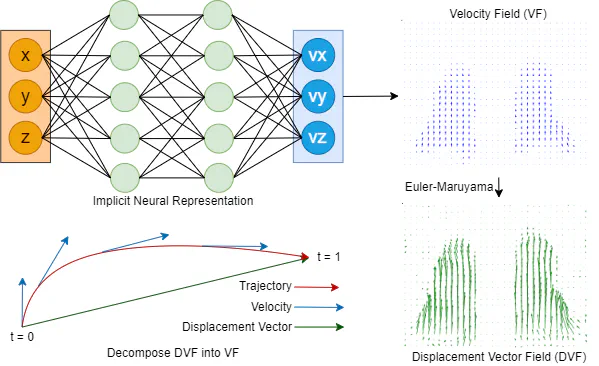Beyond Voxel-Based Methods: Continuous Motion Modeling for Enhanced Deformable Image Registration
May 3, 2024·
 ,
,
,
,
,
·
0 min read
,
,
,
,
,
·
0 min read
Xia Li
Muheng Li
Damien Weber
Antony Lomax
Joachim Buhmann
Ye Zhang
 Image credit:
Image credit:
Abstract
Intra-fraction motions are commonly estimated using deformable image registration (DIR). However, the conventional voxel-based methods can compromise accuracy, especially for large changes, affecting processes like dose accumulation and 4D dose optimization. Therefore, we introduce a novel way of representing the registration process, conceptualizing it as a continuous flow in both spatial and temporal realms. This innovative model effectively addresses the inherent limitations of voxel-based discretization, while offering a robust solution to challenges posed by large deformations. Most significantly, the sliding boundary problem, a challenge for classical methods like B-splines [1], can be solved effectively.
Type
Publication
The European Society for Radiotherapy and Oncology